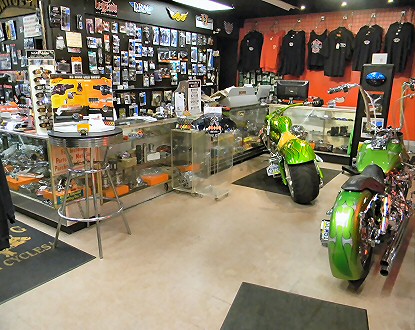See Our Motorcycle Shop for Expert Guidance and Top Quality Products
See Our Motorcycle Shop for Expert Guidance and Top Quality Products
Blog Article
Grasping Bike Gears: Just How to Enhance Your Riding Experience
In the realm of motorcycling, understanding the art of gear control is crucial for improving your riding efficiency. Properly using and recognizing motorbike equipments can significantly affect control, gas, and velocity performance, transforming an ordinary adventure into a seamless, thrilling trip.
Understanding Gear Mechanics
At the core of bike characteristics, equipment auto mechanics play an essential role in converting engine power into motion, inevitably determining speed and control. The gear proportions, very carefully developed, identify the relationship in between engine transformations and wheel turns, impacting velocity and fuel performance.
Comprehending gear technicians begins with recognizing the relevance of the transmission, which houses several equipments of differing dimensions. These equipments interact via a process recognized as meshing, where teeth of different gears involve to transfer power. The accuracy of this interaction is essential; any kind of misalignment or damages can result in ineffective power transfer, preventing performance. In addition, the plan and dimension of gears affect the motorcycle's capability to take care of different loads and rates.
Furthermore, the idea of equipment shifting is important to taking full advantage of efficiency. Timely and smooth changes guarantee that the engine runs within its optimal power band, avoiding unneeded pressure and boosting longevity (motorcycle parts nz). By understanding these mechanical details, motorcyclists can attain a harmonious blend of control, power, and performance, boosting their riding experience
Timing Your Shifts
Shift timing mastery is important for enhancing motorbike performance and improving the riding experience. Appropriately timed changes make sure that the engine runs within its ideal power band, which is vital for keeping control, attaining smooth velocity, and making sure the durability of the motorbike. Motorcyclists need to develop an intuitive sense of when to shift equipments, which entails recognizing the connection between engine revolutions per min (RPM) and rate.
To grasp shift timing, pay very close attention to the engine's sound and really feel, as these supply crucial hints about when to alter equipments. The perfect change factor usually happens when the engine approaches the top variety of its power band without reaching the redline. Shifting prematurely can result in an absence of power, while moving too late might cause unneeded engine stress
Additionally, roadway conditions and riding style impact change timing. In comparison, during highway riding, less changes at higher rates can be extra appropriate.
Enhancing Fuel Performance
While understanding motorbike equipments is vital for efficiency, improving fuel performance is just as essential for both ecological and economic factors. Ideal gas consumption not only minimizes operational prices however also decreases the environmental footprint of riding. To attain this, one have to recognize the intricate relationship in between gear choice and engine performance.
Riding in a greater equipment at lower rates can lead to engine carrying, which is destructive to both fuel economy and engine wellness. On the other hand, riding in reduced equipments at high rates results in get redirected here unnecessary gas intake.
Additionally, routine maintenance plays an essential function in gas efficiency. Making sure that the bike is well-tuned, with tidy air filters and correctly blew up tires, can improve the rules of aerodynamics and lower gas waste. Embracing a riding design that embraces gradual velocity and smooth slowdown can contribute to better fuel economic climate.
Strategies for Smooth Transitions
Achieving smooth equipment transitions is fundamental to boosting the riding experience and making certain the durability of a motorbike's transmission system. Appropriate equipment moving not only adds to a seamless adventure however additionally lessens damage on the mechanical elements. To master the art of smooth changes, motorcyclists should concentrate on a few crucial techniques.

Second of all, clutch control plays a pivotal duty. Involving and disengaging the clutch efficiently calls for practice. The clutch bar need to be launched gradually, allowing for a seamless transfer of power from the engine to the wheels without triggering a jolt or abrupt activity.

Adapting to Road Conditions
Browsing diverse road problems is an important skill for any type of motorcyclist aiming to preserve control and safety. Whether you're riding on damp surface areas, crushed rock roads, or browsing doglegs, your capacity to adapt your gear use and riding method is paramount. Recognizing just how to change your equipments properly can considerably impact grip and stability, ensuring a more secure trip.
In contrast, when riding on gravel or unequal surface, lower gears are motorcycle hand gloves more suitable. Reduced equipments supply much better control and permit you to react even more swiftly to unanticipated modifications in the roadway surface area.
Sharp contours demand specific gear management to stabilize speed and control. Downshifting prior to entering a contour can help keep momentum while ensuring the bike continues to be steady throughout the turn. Constant technique in diverse conditions boosts your ability to forecast and respond to adjustments in roadway appearance and slope.
Final Thought
Grasping motorbike gears dramatically improves the riding experience by enhancing gas, acceleration, and control effectiveness. Adapting equipment selection to various road conditions, such as utilizing greater equipments on damp surfaces and reduced gears on crushed rock, further improves handling and security.
Understanding gear technicians starts with identifying the significance of the transmission, which houses numerous motorcycle riding boots for sale gears of varying dimensions. These equipments connect through a process understood as meshing, where teeth of different gears engage to transfer power (motocross gear). Mild adjustments to the throttle throughout gear shifts can avoid jerky activities and maintain a consistent riding rate
Whether you're riding on wet surfaces, crushed rock roads, or navigating sharp turns, your capacity to adjust your equipment usage and riding strategy is extremely important. Adapting equipment selection to different roadway conditions, such as using higher equipments on wet surface areas and lower gears on crushed rock, further boosts handling and safety.
Report this page